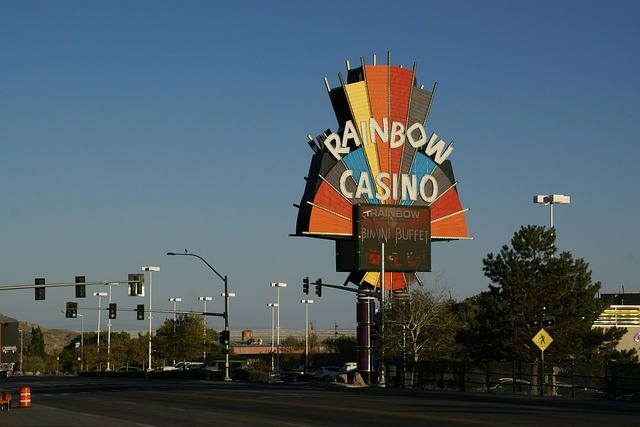The evolution of Brick and Mortar Casinos reflects a shift from extravagant decor to functional, diverse experiences that cater to a broader player base. Modern casinos prioritize accessibility, targeted experiences, and high-tech features, incorporating local themes for unique ambiance. Future trends include digital gaming, smart building systems, and eco-friendly materials, enhancing player experiences while promoting sustainability. These innovations ensure Brick and Mortar Casinos remain vibrant entertainment hubs appealing to diverse audiences across different age groups and preferences.
“Unveiling the Art of Casino Architecture: A Journey Through Space and Time
Brick and mortar casinos have evolved from simple gaming halls to sophisticated entertainment hubs. This article delves into the captivating world of casino design, exploring its historical roots and modern trends. We’ll dissect the key elements that define a successful casino architecture, from ambiance to functionality. Furthermore, we anticipate future developments in land-based casino spaces, highlighting innovative concepts that are set to revolutionize the industry.”
- The Evolution of Brick and Mortar Casino Design
- Key Elements of a Successful Casino Architecture
- Future Trends Shaping Land-Based Casino Spaces
The Evolution of Brick and Mortar Casino Design

The design of brick-and-mortar casinos has undergone a remarkable evolution, reflecting changing societal attitudes, technology, and consumer preferences. Historically, casinos were designed to exude opulence and glamour, with ornate decor, luxurious furnishings, and grand architectural features. These establishments often boasted extravagant ballrooms, elegant dining areas, and lavish bars, creating an atmosphere of sophistication and leisure. The focus was on creating a sensory experience that captivated visitors and encouraged prolonged stays.
Over time, as gambling became more mainstream and competition increased, casino architects began to experiment with new themes and layouts. Modern brick-and-mortar casinos emphasize functionality, accessibility, and targeted experiences. While elegance still plays a role, the design now caters to diverse player preferences, incorporating high-tech slot machines, immersive gaming tables, and interactive features. Today’s casinos are designed to be destinations that offer something for everyone, from casual players to high rollers, ensuring a vibrant and engaging environment that keeps visitors coming back.
Key Elements of a Successful Casino Architecture

The architecture of a successful casino goes beyond just attracting players with glitz and glamour; it involves carefully designed spaces that enhance the overall experience, from the moment patrons step inside. In the realm of brick-and-mortar casinos, key elements include intuitive wayfinding that guides guests through various gaming zones, each with its unique ambiance. Well-designed circulation patterns ensure a seamless flow of people, avoiding congestion and facilitating easy access to different areas, such as gaming tables, slot machines, and entertainment venues.
Esthetic appeal plays a significant role in casino architecture, utilizing light, color, and texture to create visually captivating environments. Strategically placed mirrors or reflective surfaces can expand spaces, while clever use of lighting enhances the drama and excitement. Additionally, incorporating themes that resonate with the local culture or target demographic adds depth and character, making each casino experience unique. These elements collectively contribute to creating a welcoming atmosphere that encourages patrons to spend more time and money within the establishment.
Future Trends Shaping Land-Based Casino Spaces

The future of brick and mortar casinos is set to be transformed by innovative trends that cater to evolving customer expectations. One prominent trend is the integration of technology, with digital gaming tables and interactive screens enhancing the player experience. Virtual and augmented reality technologies are also expected to play a significant role, offering immersive experiences where players can virtually explore different games and environments from the comfort of their seats.
Sustainable design and energy-efficient solutions are gaining traction as casinos strive to reduce their environmental impact. This includes adopting smart building systems that optimize energy usage and incorporating eco-friendly materials in construction. Additionally, there’s a growing emphasis on creating diverse gaming areas to appeal to a broader audience, with dedicated spaces for different age groups and preferences, ensuring that brick and mortar casinos remain vibrant hubs of entertainment.
The evolution of brick and mortar casino architecture is a dynamic process, driven by technological advancements and shifting player expectations. By integrating key elements like immersive experiences, intuitive wayfinding, and state-of-the-art amenities, today’s casinos create engaging environments that cater to diverse tastes. As we look towards the future, sustainable design practices and interactive technology will continue to shape land-based casino spaces, ensuring they remain vibrant hubs of entertainment and social interaction.






